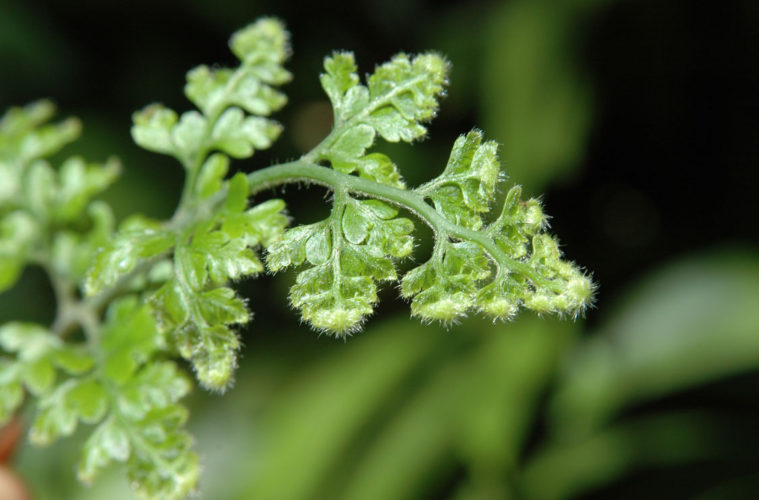The tropical foliage trend in decor has resulted in a renewed interest in ferns
1 BLECHNUM SPP.
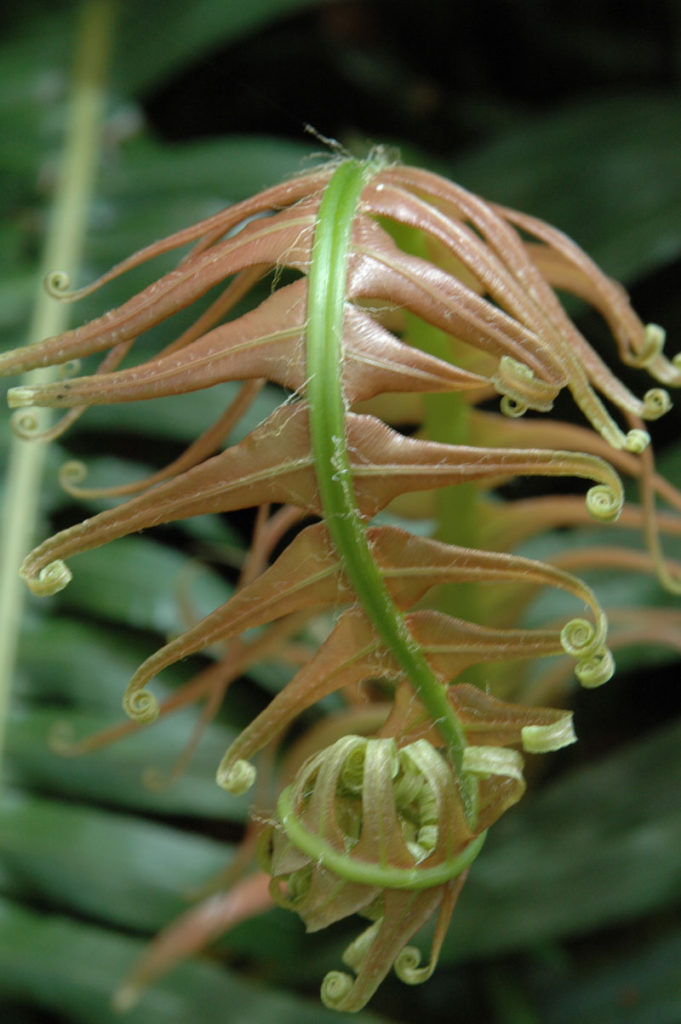
Indigenous Blechnum spp. with their curling fronds (crosiers or fiddles), are found along streams in mountains and in forests. They produce bold arching fronds, which when they first emerge, are tender and beautifully coloured, then turn green, thick and leathery. Strong growers, they need regular moisture. Sizes vary from 12cm–1m high; the uncurling, narrow fronds which appear later are sterile.
2 MAIDENHAIR FERN (ADIANTUM SPP.)
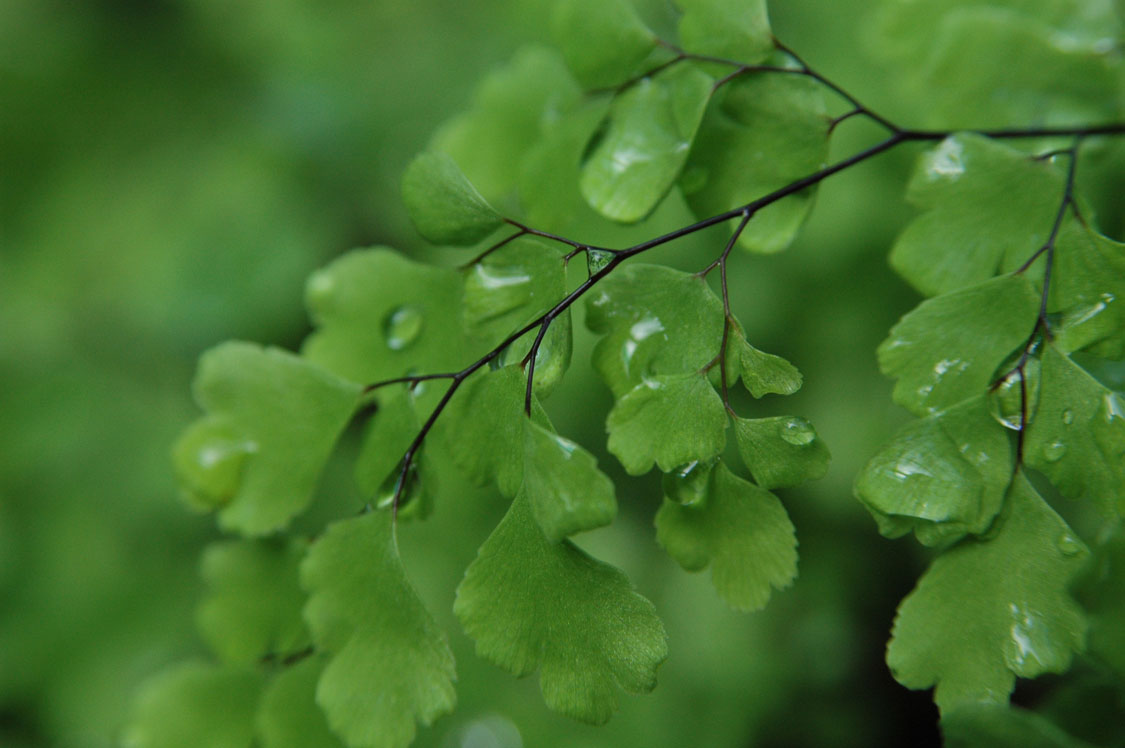
There are many forms of maidenhair fern with dainty, frothy filmy fronds and often wiry black stems or rachis. They thrive in a cool, moist position, love to be pot-bound, grow well indoors and reach about ankle high. Look out for Adiantum capillus-veneris ‘Brilliant Else’, the multi-divided fronds of which are rose tinted when they first emerge.
3 HOLLY FERN (CYRTOMIUM FALCATUM)
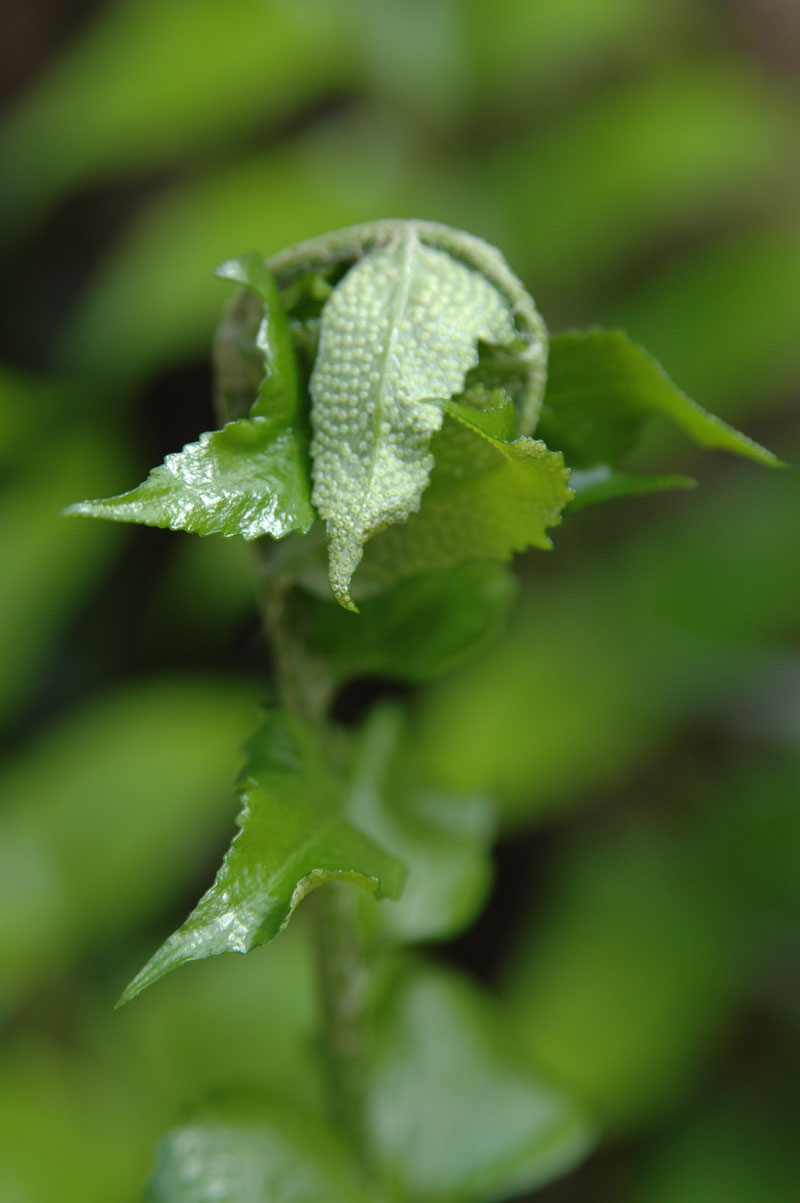
The large leaflets of the holly fern contrast well with the softer, light-green, more fragile-looking fronds of ferns like the lace fern (Microlepia speluncae). With their leathery leaves, they’re remarkably hardy and can withstand the odd dry period. They often reproduce from spores in gardens where moist conditions prevail.
4 TREE FERN (CYATHEA SPP.)
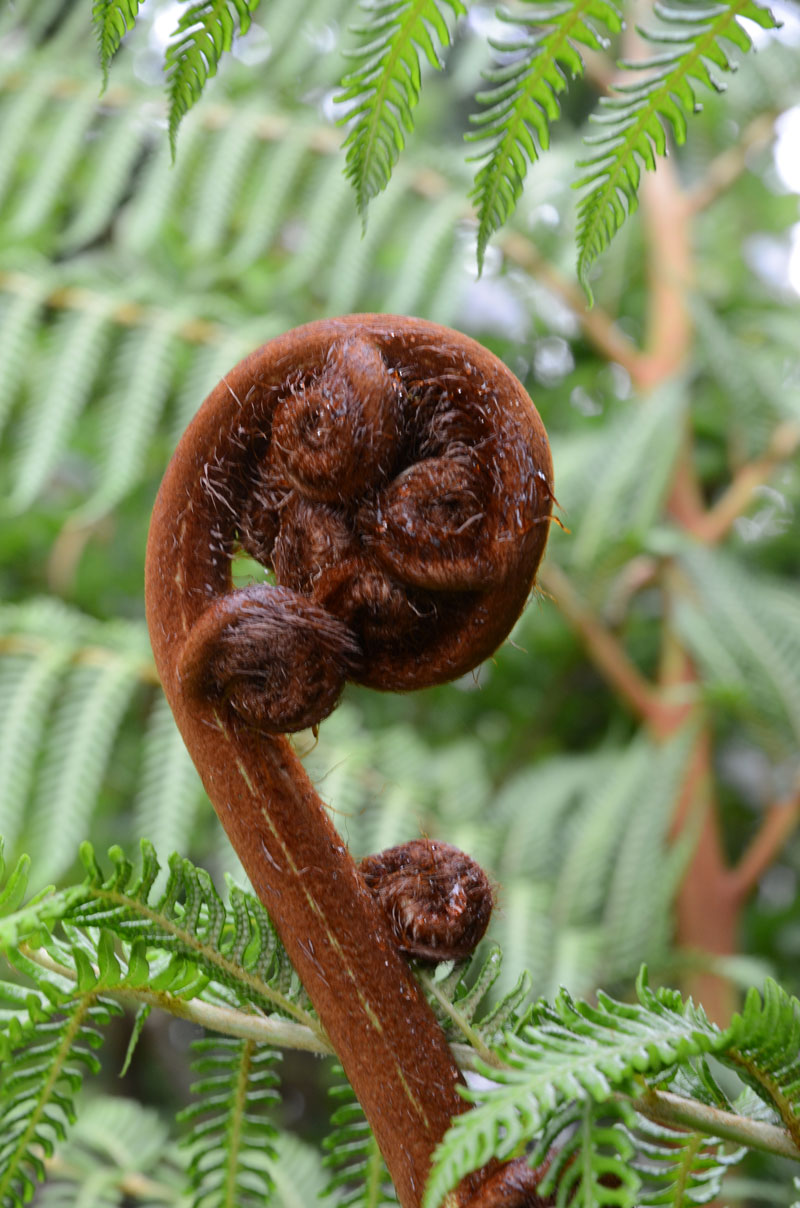
Tree ferns give stature to the garden with their thin trunks topped with a feather duster of leaves. Mist their crowns and the aerial roots which make up their trunks. As some are more sun and frost tolerant than others, check with your local nursery for the best variety for your area. Although we have indigenous tree ferns, those from Australia and New Zealand like C. australis and the large C. brownii tend to be faster growing and more readily available.
Some species need protection from frost in cold regions. In this case, simply wrap the fern up with hessian or bubble wrap; although it won’t die from frost, it will be severely damaged and may take time to regrow.
5 VARIEGATED RIBBON FERN (PTERIS SPP.)
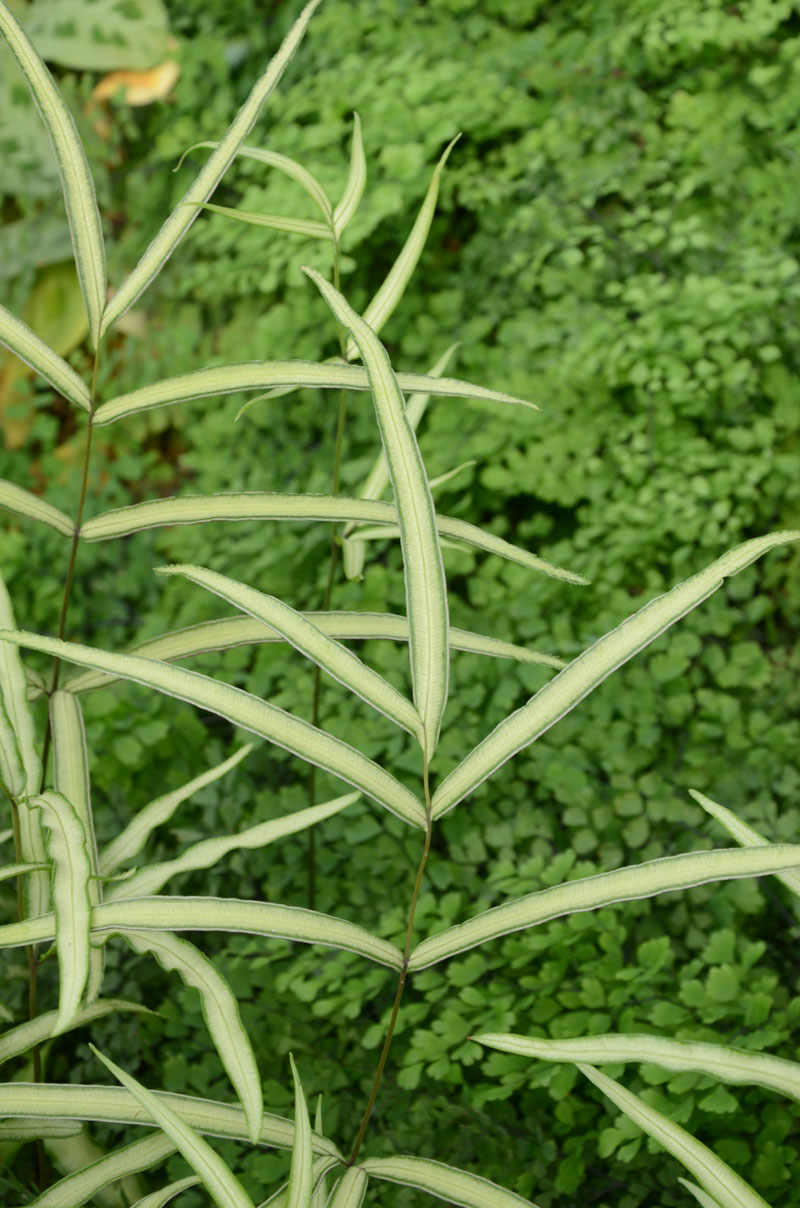
Members of this family, which have narrow, variegated ribbon-like leaves, include the sword brake and tender brake ferns. Plant P. cretica ‘Albolineata’ and spider brake (P. multifida) against a plain green background to show up their markings. They need regular watering, love humid conditions and can be grown in pots indoors and outside in indirect light. Size varies from one from to the next.
6 KNYSNA FERN (RUMOHRA ADIANTIFORMIS)
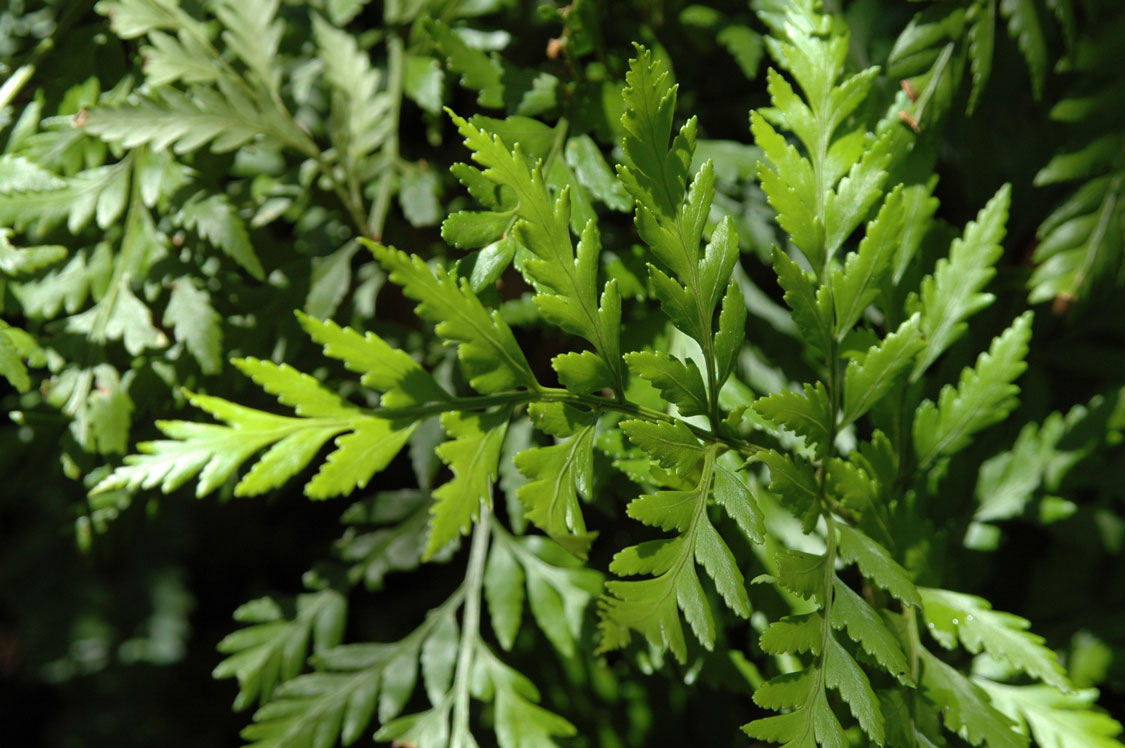
This fern is also known as the leather or seven-week fern as it lasts that long when cut; it’s popular with florists.
It has a creeping rhizome, dark foliage and is a handy knee-high groundcover. It’s reliable, tolerant of some sun and not overly thirsty.
AT A GLANCE
POSITION: Ferns are at their best in indirect light such as in cool shady areas under trees. Avoid positions where they’ll get full sun, harsh afternoon sun and deep shade.
SOIL: Incorporate plenty of humus, leaf mould or compost, coco/palm peat and even fine bark chips in the top 25–30cm of soil. A generous dusting of bonemeal is appreciated. Most prefer an acid medium. Remember to mulch.
WATER: While ferns need to be kept moist and should never be allowed to dry out; good drainage is essential to avoid waterlogging.
FERTILISE: Feed with slow-release products or organic liquid food like Seagro every two months during the growing season.
PESTS: Scale and mealy bugs, particularly on indoor plants, caterpillars and occasionally snails and slugs. Ferns are sensitive to some pesticides; use according to the instructions.
FROST TOLERANCE: Varies from species to species.
Click HERE for points to consider before buying a fern and HERE for growing tips.

